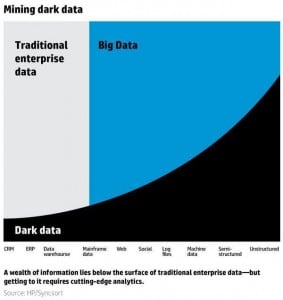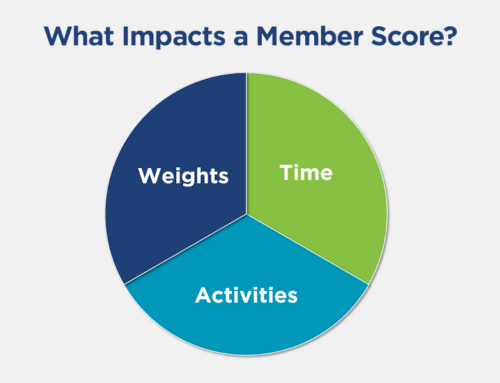Dark data? That doesn’t sound good. How can you determine if your association has any? Start with Gartner’s definition of dark data, “the information assets organizations collect, process and store during regular business activities, but generally fail to use for other purposes.” Your association undoubtedly has plenty, so how do you find the dark data with the most value and shed some light on it?
The diagram below from HP shows along the X axis all the places you can start looking for the dark data. You might also find it helpful to refer back to one of our prior posts on locating data, How to Create a Data Inventory for Associations and Nonprofits, which contains the steps to identify your data sources and determine if they have value. If you’ve already done this exercise, then it might be worth revisiting your list. Let’s look at some examples.
Web Traffic Data
Nearly everyone is collecting the data resulting from visits to your association’s web site. If you use Google Analytics (as most do) then you have a wealth of information at your disposal including your most popular content, browser version used, screen size used, and even custom data [note our previous blog post Engage your Members with Custom Dimensions in Google Analytics] if you’ve added it to your script. If no one from your organization is logging into your Google Analytics account and reviewing the collected data, then it is dark! Google Analytics even provides an API so you can get your data out, load it into your data mart, and even blend it with other data sources.
Internal Support
Many associations maintain some type of ticket or helpdesk system to aid co-workers in resolving issues with the technology in place or even with broken keyboards. If you use such a system, do you do track more than open vs closed tickets? By mining the data here you could learn if your department has enough volume to warrant another employee or if you see the same question over and over, or if there are only 5 of your 100 co-workers making any requests. All of those trends could lead you to taking action that reduce effort by creating a FAQ for commonly asked questions or providing more internal education/training.
Once you have located your association’s dark data, give some thought as to whether or not it contains value. If the data can be visualized in a way that it can tell a meaningful story about how to be more competitive, how to retain more members, how to engage more members or how to elevate your association’s image, then get the flashlight or the spotlight and start shining.




